Affiliate links on Android Authority may earn us a commission. Learn more.
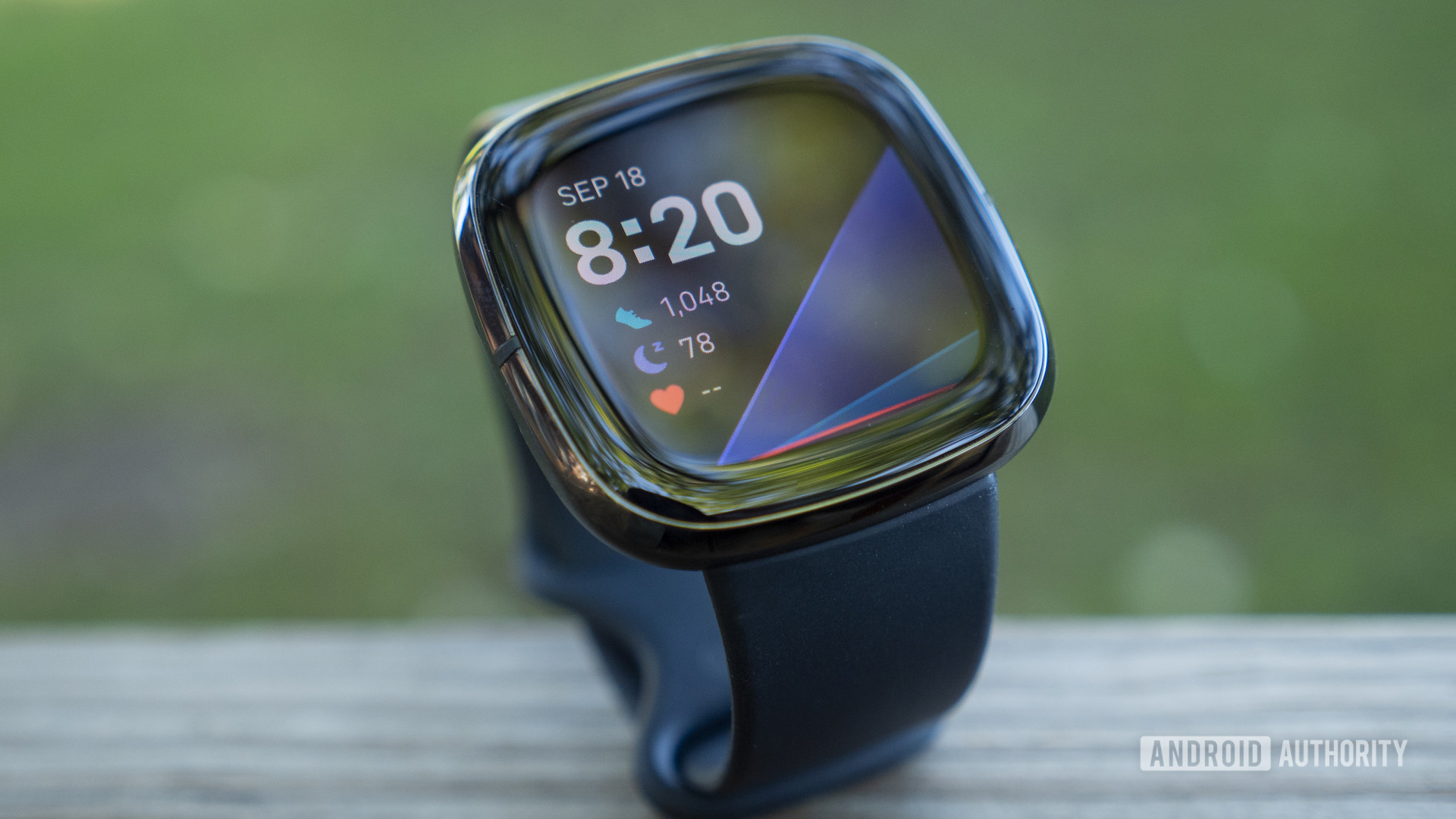
Fitbit Sense
What we like
What we don't like
Fitbit Sense
The smartwatch landscape grows more competitive every year. ECG monitors and pulse oximeters are commonplace, and third-party app support is widely expected. Fitbit attempts to keep up with the crowd with its Sense lineup. The company’s health-focused smartwatch delivers a lot of what users want to see, and some things that still need some tweaking. Read our full Fitbit Sense review to learn whether the original Sense watch is still worth buying.
Update, March 2023: We’ve updated our Fitbit Sense review with details on the latest competition plus changes to existing Fitbit features.
Design: A+
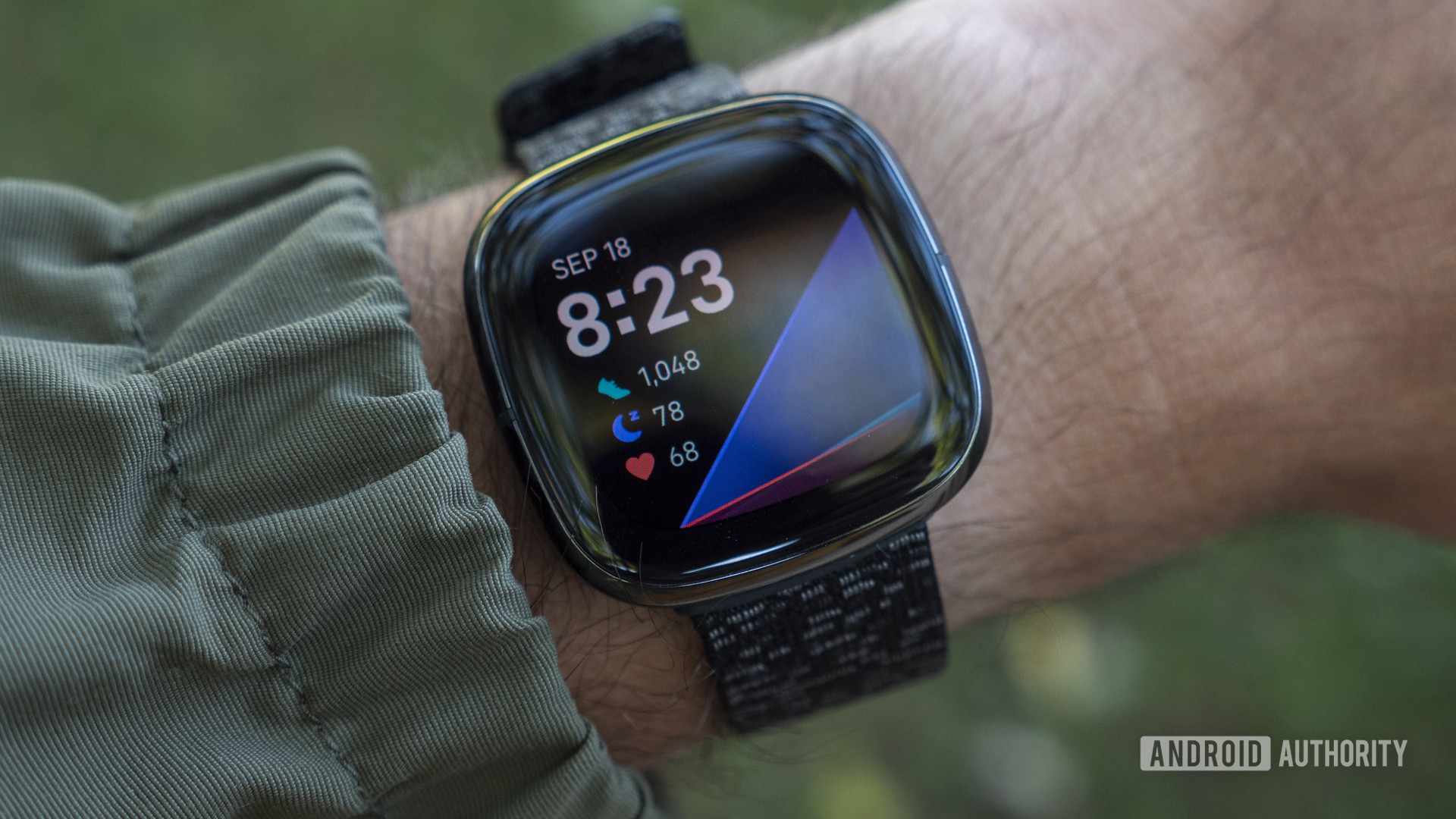
The Fitbit Sense is a major hardware upgrade over the Fitbit Versa 2 and brings a few more sensors to the table than the Versa 3. It’s made of the same materials for the most part, but just about everything else is more refined.
The stainless steel and aluminum case is a near clone of the Versa 3. It looks about the same as the Versa 2, too, but it feels significantly more well-built. Think Apple-level build quality. It has a 1.58-inch AMOLED panel that’s a little rounder than that of the Versa 2. It’s a nice screen that gets plenty bright outdoors in direct sunlight and has good viewing angles. There’s still a big ol’ bezel surrounding the display, though it’s notably smaller than the bezels on previous Fitbit watches.
The Fitbit Sense is a premium smartwatch through and through.
The physical button on the left side of the case has been replaced with an inductive button, which we’ve seen on the Fitbit Charge 4 and Charge 5. It now acts as a home button, not a back button. I like the idea of inductive buttons, but in practice, they’re not great. This one can be unresponsive at times. It’s positioned a bit too low on the case, so I’ve ended up pinching my wrist multiple times. As a result, I’ve just gotten used to swiping to go back and avoiding the home button altogether.
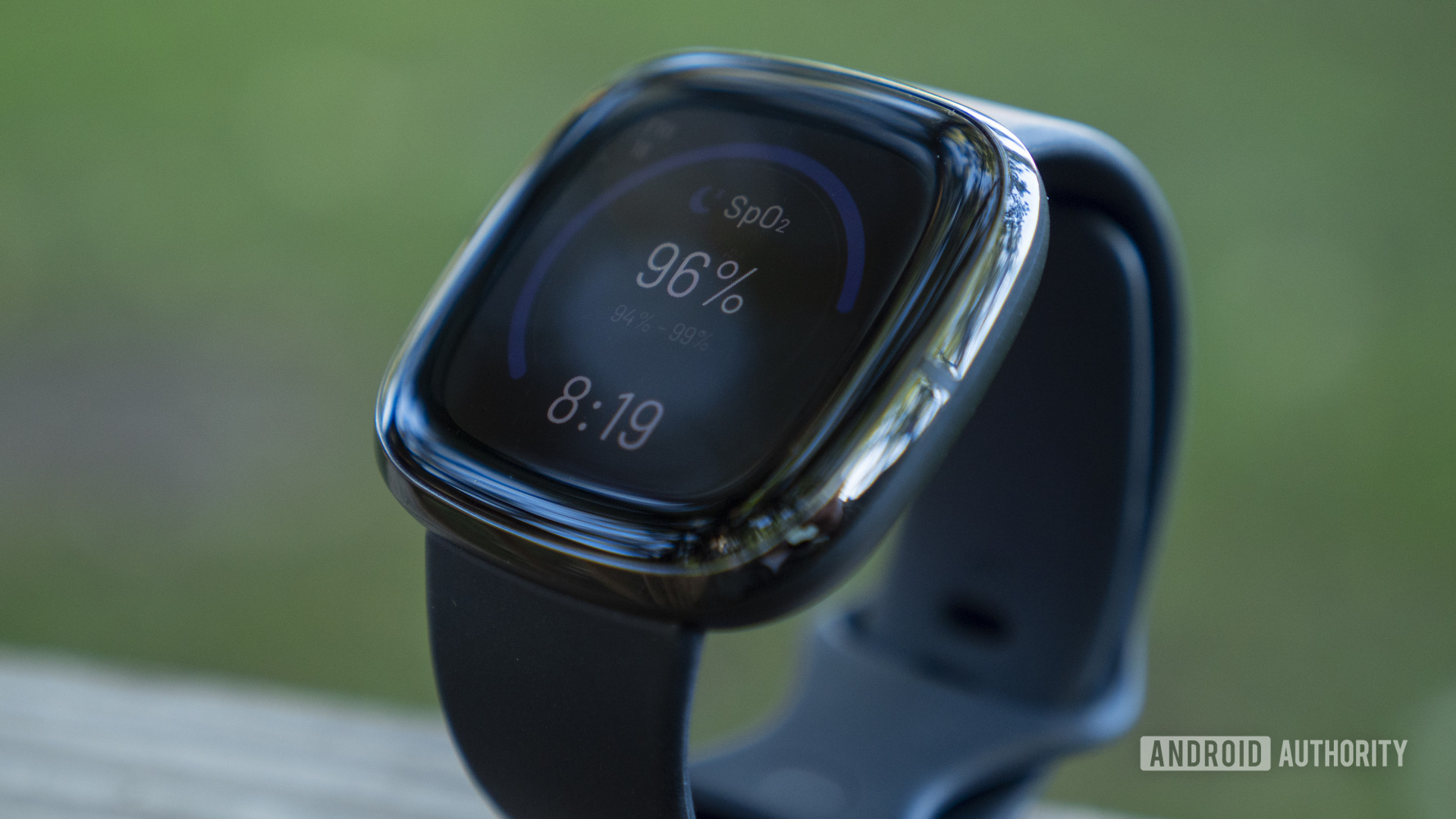
The Fitbit Sense comes with an “infinity” strap, which does not buckle like a normal watch. It instead includes an Apple Watch-like buckle. It’s fine, but boy, do I hate putting these things on. The strap itself is very nice. It’s soft and it doesn’t collect dust or lint as quickly as others. Also, Fitbit finally fixed its horrible proprietary strap mechanism with this generation. The Sense’s straps function like the Fitbit Charge 4’s straps: you press down on a small latch to remove them. Once the straps are locked into place, they do wiggle around a bit. If you don’t like the sport strap that’s included in the box, a variety of first- and third-party straps are available on Fitbit.com and Amazon.
Fitbit claims the Sense can last up to six days on a single charge in smartwatch mode (i.e. no GPS usage). That’s accurate as long as you watch what sensors and settings you’re switching on. I’ve been able to get about five days or so on a single charge. I’ve also been messing with the device way more than I normally would, and I’ve been going out for runs with GPS enabled. For reference, a five-mile run drained about 10% battery. You can also turn on the always-on display, though battery life will reduce to roughly two days.
Another small-yet-notable upgrade: the Fitbit Sense introduced an updated charger, eliminating the weird clasp-dock thing of the past. The charger is magnetic and supports quick charging, which can charge your Sense from 10-80% in ~40 minutes.
Health and fitness tracking: Nailing the basics
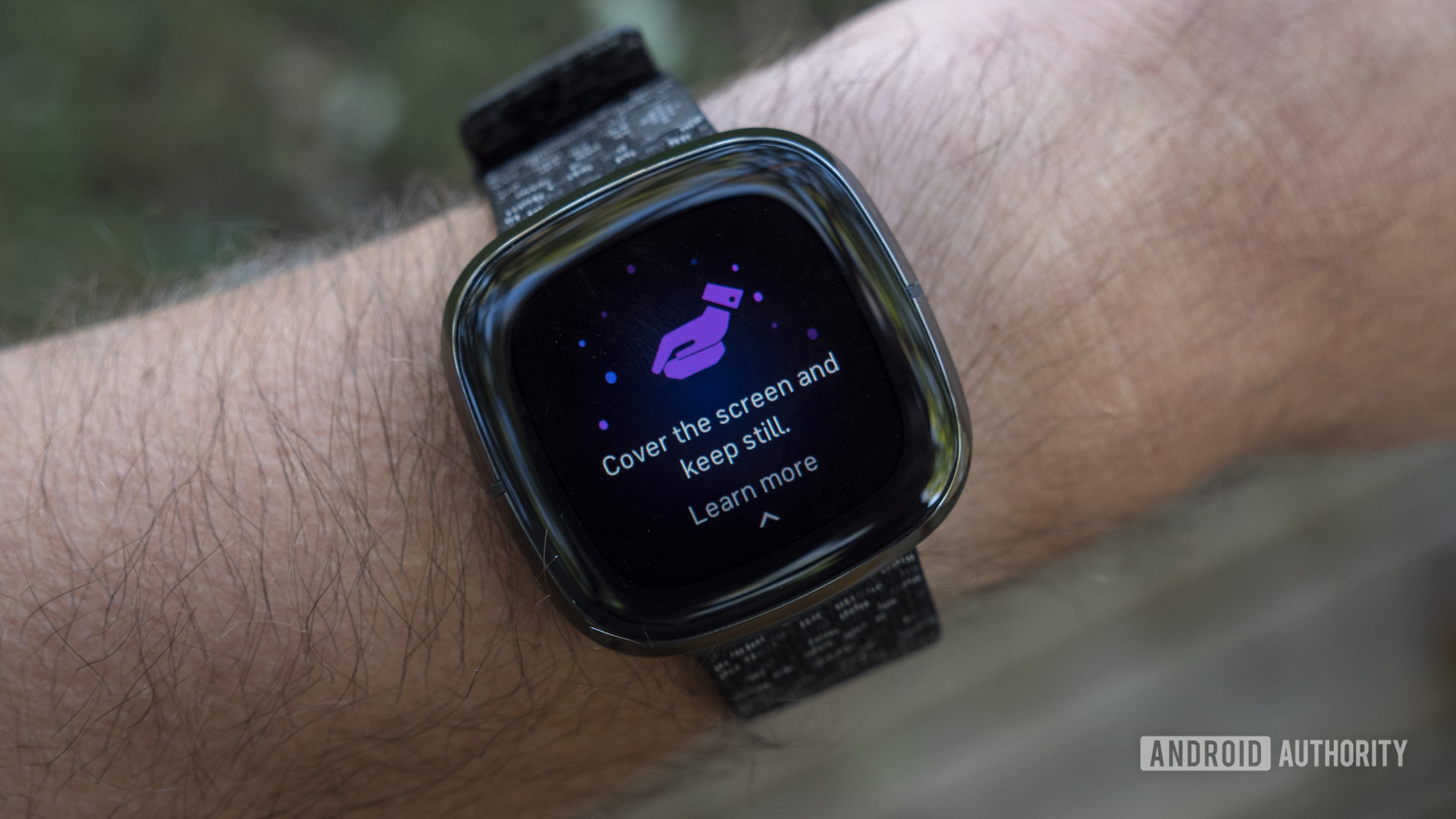
Fitbit positions the Sense lineup as its most health-focused wearable line. The Sense has three major advantages over the Versa 3: an EDA sensor, a medically certified ECG monitor, and a skin temperature sensor. The Sense isn’t the first wearable to have an electrodermal activity (EDA) sensor, nor is Fitbit the first company to offer stress tracking. But most companies do so by monitoring your heart rate variability (the interval between each heartbeat).
The Fitbit Sense’s EDA sensor applies small, undetectable electrical charges to your skin to measure how they interact with your body’s sweat level. Research shows electrodermal activity is closely linked to our emotional state.
Taking an EDA recording is pretty simple. Open the EDA Scan app on your Fitbit Sense, then place your hand over the display. It takes two minutes to record. That might seem like a long time to sit there with your hands still, but I’ve found it helps calm me down quite a bit.
I have doubts that the EDA sensor will be the preferred method for stress tracking over heart rate variability, at least in its current implementation. EDA scan results don’t provide as much data as one would think. You’re given a small graph showing your heart rate data for the scan, as well as the number of EDA responses you experienced. In the example above, I experienced six EDA responses. The text below each graph reads “…you should typically expect fewer EDA responses the calmer you are.”
But, compared to what? Is six considered “few?” Presumably, I should be shooting for zero every time, but there was no indication that this particular scan was better or worse than my other EDA scans. There’s no “You might want to relax a little more, here are some mindfulness practices” or any other insights immediately following the measurement. More details about how this data works and what users should do with it would be very helpful.
I also felt like I received more trustworthy results from my Garmin Fenix 6 Pro compared to the Sense. I was extremely stressed one morning, so I thought it was a perfect time to test the EDA sensor. It came back with zero EDA responses. The Fenix 6 Pro showed my starting stress level was quite high, and respiration rate and heart rate data helped fill out the overall picture of my stress. Take that for what you will; I don’t have another EDA sensor to compare with the Sense.
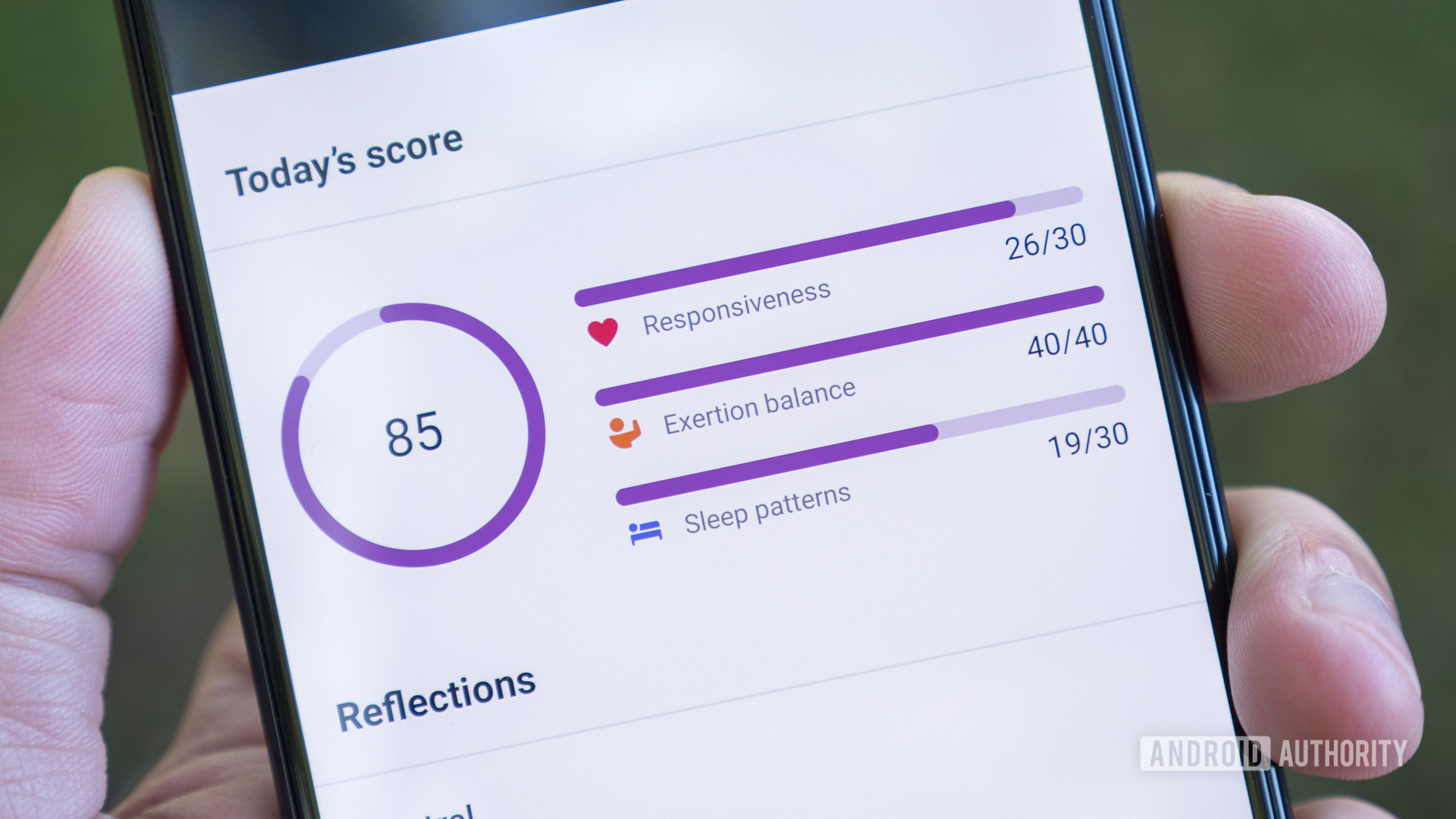
The results from your EDA scans, as well as your responsiveness (amount of strain your body is under based on HR, HRV, and EDA data), exertion balance, and sleep quality combine to form a stress management score from 1-100. I’ve found my stress score has mostly been reflective of how I’m feeling on any particular day.
There’s also the question of how useful manual EDA recordings are compared to all-day stress tracking using heart rate variability (HRV). After all, most people will only record EDA scans when they’re stressed. That means their stress scores might be affected if they aren’t recording frequently. It all depends on how Fitbit weighs EDA data against other stress inducers. By contrast, stress tracking using HRV can happen all day whether you manually record your mood or not.
Generally, I think Fitbit’s stress tracking efforts are interesting and will be more than fine for most people. After all, the overall stress score has been accurate. I just think the EDA implementation needs some refining.
In 2023, you can’t have a health-focused wearable without an electrocardiogram (ECG) monitor for detecting potential heart issues like atrial fibrillation (AFib). The ECG monitor wasn’t activated on the Sense by the time it launched, but Fitbit began rolling out ECG functionality to Fitbit Sense users in the US, UK, and Germany on October 8, 2020. My Fitbit Sense review unit here in the US received the update right away. The Sense’s ECG monitor is medically validated by the FDA and has CE clearance in Europe, just like the Apple Watch.
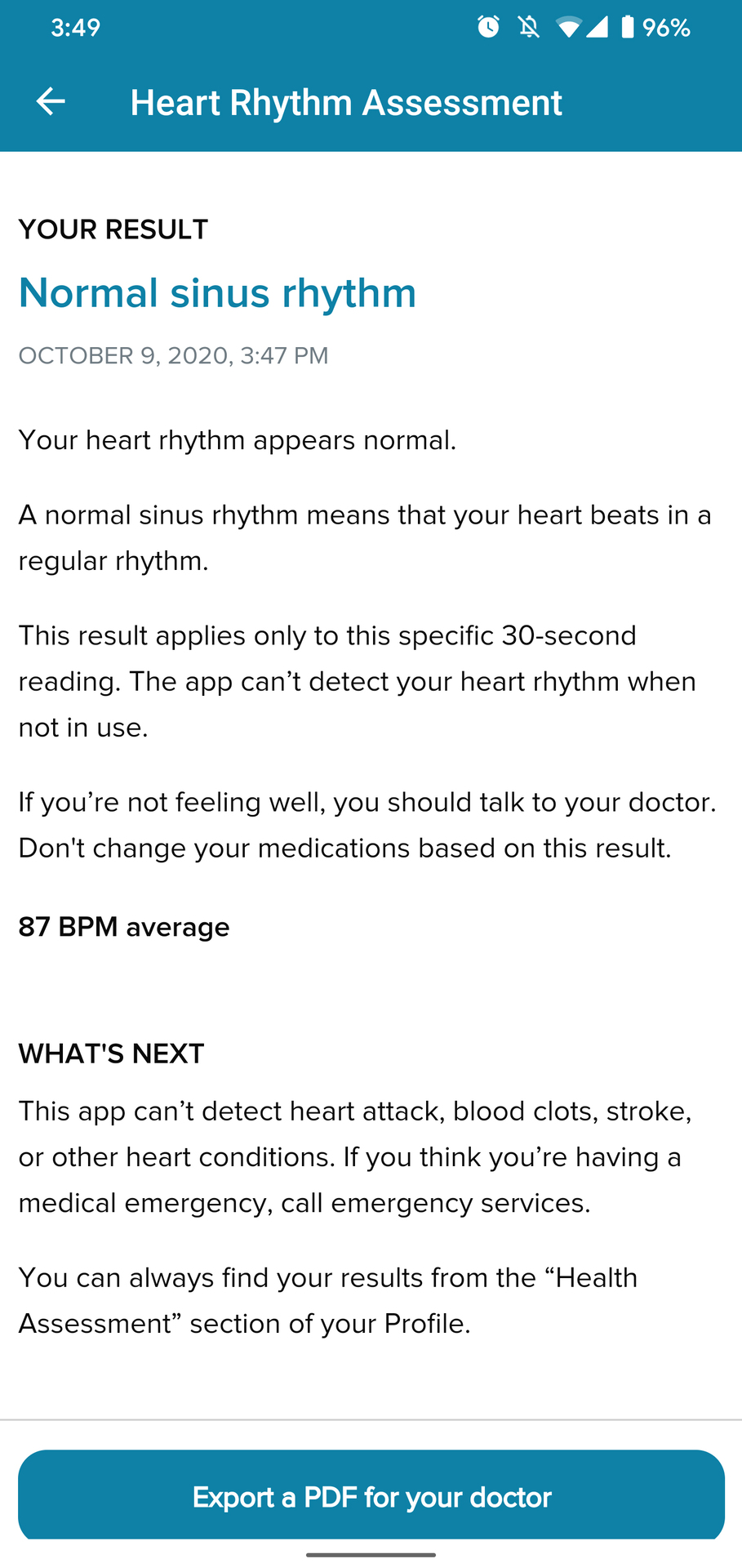
The whole process of taking an ECG reading is a little clunky. Selecting the ECG app on your watch prompts you to go to the Discover tab in the Fitbit app, then scroll down to select an ECG document. You then need to go through a few disclaimers before you can start recording an ECG.
Once that’s done, reopen the ECG app on your Sense. Make sure you’re sitting still, then put your index finger and thumb on the Sense’s bezel. Sit there for 30 seconds, and the Sense will display your results. Well, it’ll tell you whether it senses any signs of AFib. You need to go back into the Discover tab to see your actual ECG results. Why isn’t this available in the main Dashboard of the Fitbit app? I think Fitbit needs to do some reworking here to make the process more seamless. In addition, you can only see your actual results once you export a PDF to your internal storage. As for the accuracy of the ECG results, everything matched up well with my Withings ScanWatch.
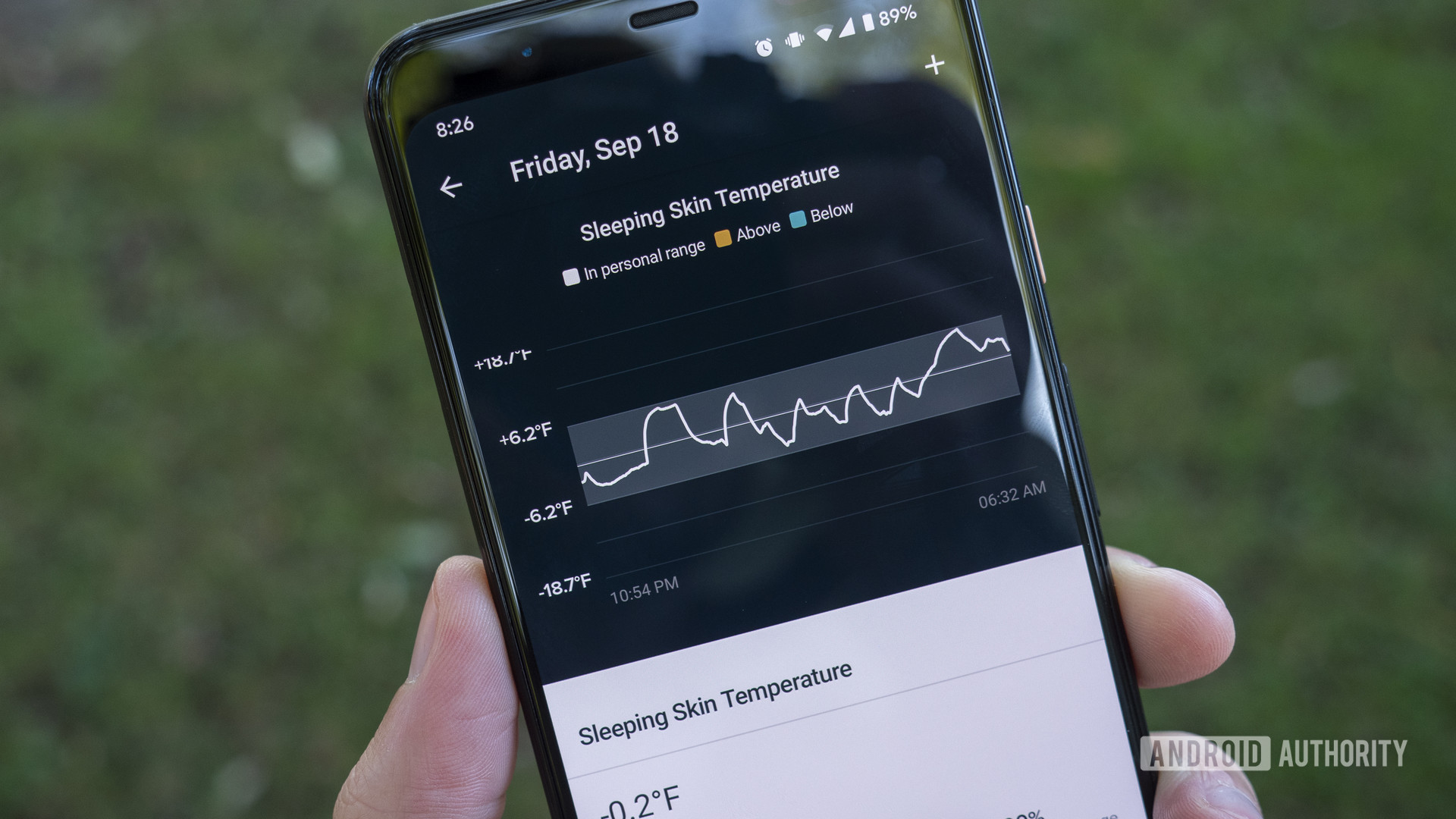
The Fitbit Sense also has a skin temperature sensor to catch early signs of illness. The sensor records the temperature of your skin at night, compares it to your personal baseline, and shows you trends over time. The graph in the Fitbit app is simple and easy to read. None of my readings ever went outside my target range throughout the Fitbit Sense review period.
It’s easy to see the value of this sensor. You wake up feeling a little off, check your Fitbit app, and it turns out you were burning up overnight. We’ve seen other companies adopt this sensor since the Sense launched, including the latest Galaxy Watch series and Apple Watch Series 8.
Skin temperature sensors will hopefully be a mainstay on Fitbit devices going forward.
Like Fitbit smartwatches before it, the Sense will measure your blood oxygen levels with its SpO2 sensor. It’ll track your levels overnight and show you an oxygen variation graph in the morning with its findings. You’ll be able to see any high variations (or breathing disturbances) you experienced during the night, potentially warning you of more serious health conditions. However, the Sense’s SpO2 sensor is not medically validated, so it cannot categorize any of these disturbances as sleep apnea.
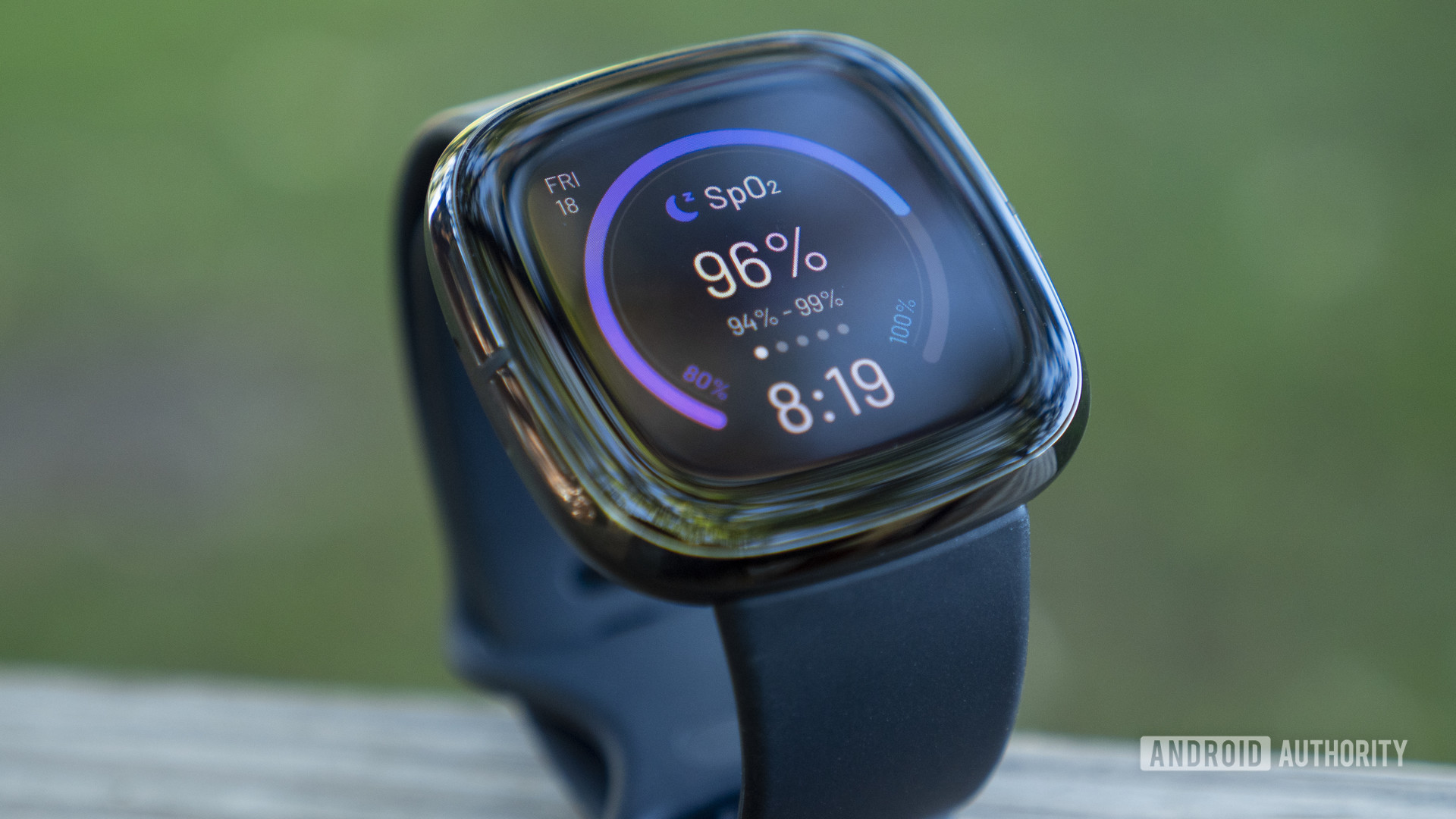
At launch, the Fitbit Sense’s SpO2 implementation had some major caveats — namely, blood oxygen trends were only available to Fitbit Premium subscribers. Since this metric was arguably why you’d want to use the blood oxygen sensor in the first place, this was a major oversight at launch. Thankfully, in December 2020, Fitbit allowed non-Premium subscribers to view their blood oxygen trends.
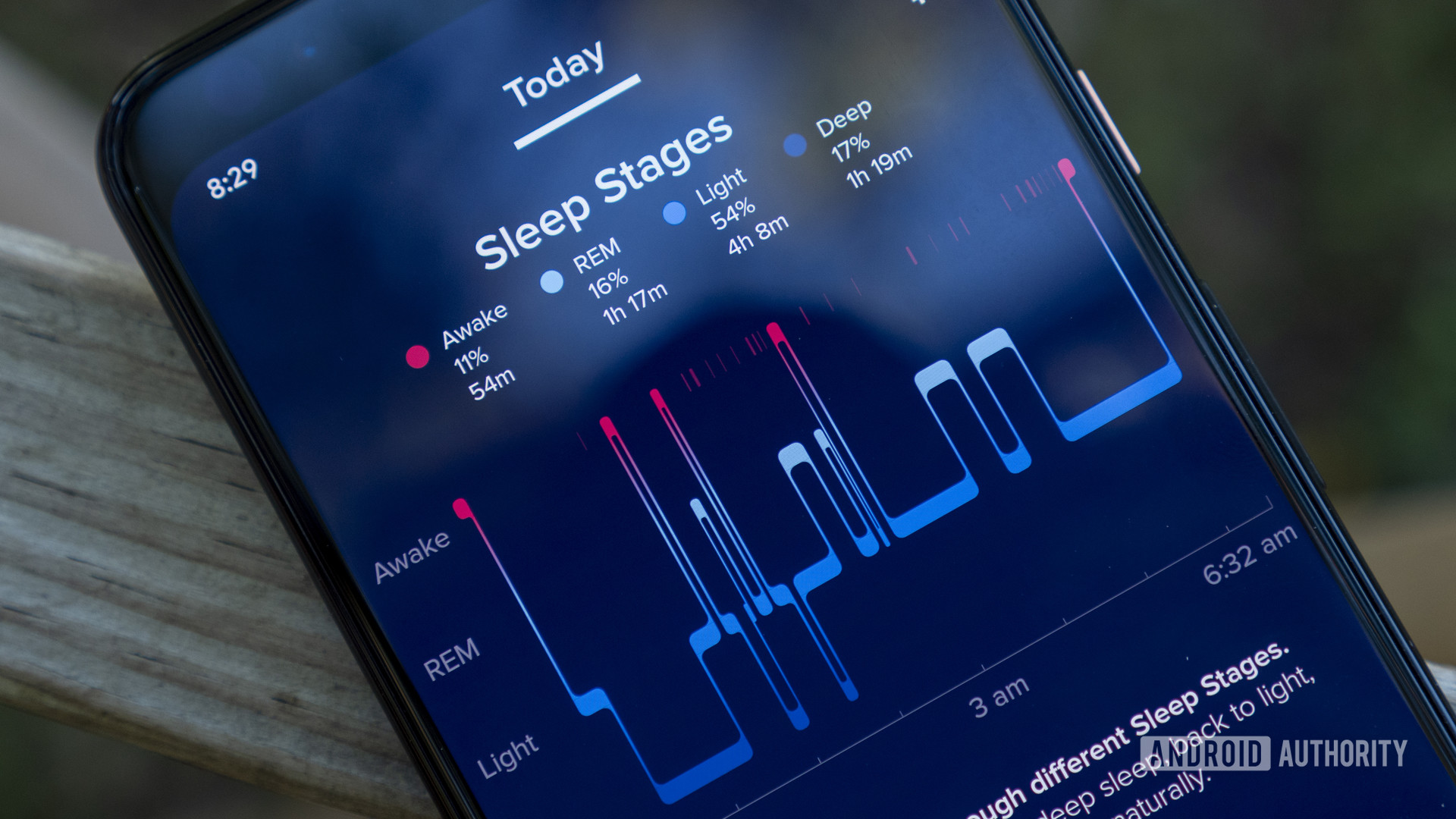
Sleep tracking continues to be a strong suit for the wearables company. As with other Fitbits, the Sense will track your light, deep, and REM sleep, and give you an overall score from 1-100 based on your heart rate, sleep stages, and time awake. Fitbit’s sleep score has always been quite accurate for me. Throughout the Fitbit Sense review period, I never noticed any major slip-ups with sleep tracking and it compared well against another favorite sleep tracker of mine, the ScanWatch.
Fitbit added snore and noise detection to the Fitbit Sense and Versa 3 in a September 2021 update. The Sense can detect and analyze the intensity of noises made during the sleep cycle using the built-in microphone. The info is available in the Sleep section and gives users yet another metric to gauge their sleep quality. Fitbit does recommend that the Sense’s battery is above 40% at night to ensure it functions correctly.
The Fitbit Sense also boasts an upgraded heart rate sensor compared to previously-released Fitbits. It uses Fitbit’s PurePulse 2.0 technology with an updated algorithm, which should provide more accurate numbers across the board. To test this, I went for a five-mile interval run with the Fitbit Sense, Fenix 6 Pro, and Wahoo Tickr X chest strap. See the screenshot below for the results.

The Fenix 6 Pro and Fitbit Sense both took a few minutes to start leveling out. After that, things remained pretty steady between all three devices. Notably, the Sense was a little slow to pick up on a few heart rate peaks in the first 20 minutes or so of the run. It also remained consistently higher than the Fenix 6 Pro and Tickr X by about 3-4 bpm. You’ll also notice that it never got down to the same low 110 bpm valley as the other devices did at the ~37-minute mark.
For general use, I think the Sense does just fine, comparatively. It was able to pick up on the stark changes in heart rate for the most part, even if it didn’t match down to the beat. This was a particularly high-intensity interval run, though. The Sense was most accurate between the 150-165 mark; anything higher than that and the Sense started to lose its footing.
The Sense will also alert you if your heart rate is too high or too low during times of inactivity. My heart rate never triggered this feature based on the recommended heart rate threshold. If you feel like Fitbit’s estimates are off, you can set custom thresholds in the Fitbit app.
As per usual, I didn’t notice any issues with the Sense’s 24/7 heart rate readings. It’ll also display your target heart rate zones during activity just like other Fitbit trackers. As I said in my Charge 4 review, receiving a buzz every time you change heart rate zones can be distracting. I turned these vibrations off right after my first run with the Sense.
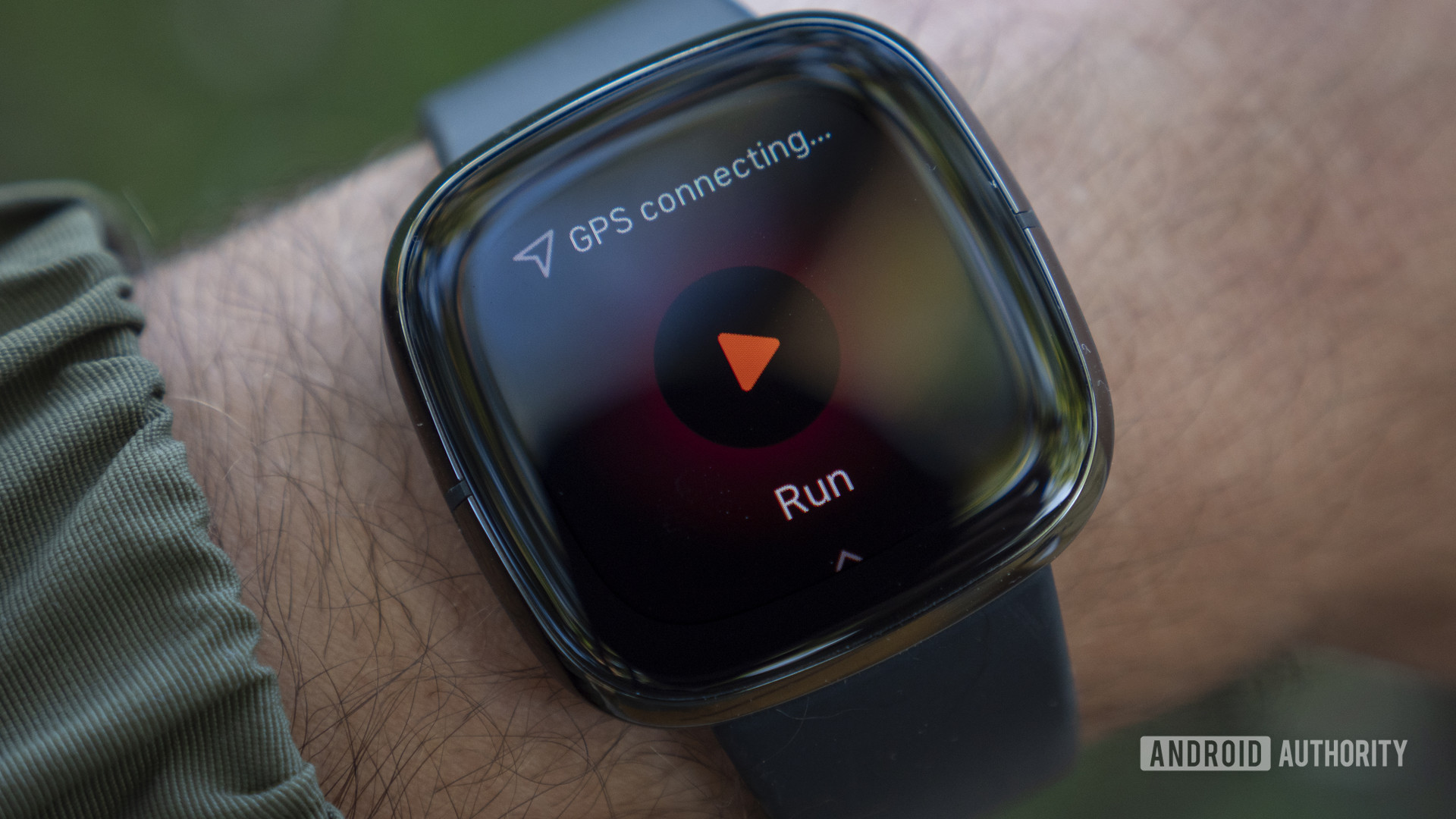
Fitbit’s Active Zone Minutes are back, too. This is a useful and fun way to achieve the American Heart Association and World Health Organization’s recommended 150 minutes of activity per week.
After the Fitbit Charge 5‘s launch, Fitbit also brought the Daily Readiness Score to the Sense. This metric suggests how much activity you should strive for each day. It’s effectively Fitbit’s answer to Garmin’s Body Battery, but it’s locked behind Fitbit Premium. This makes it a far less useful factor for those not interested in subscriptions.
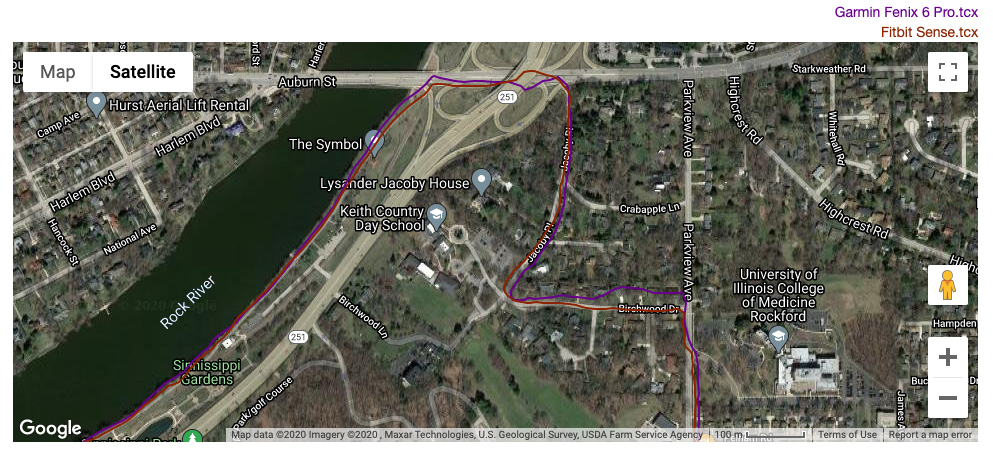
Built-in GPS! Fitbit finally caved and added GPS to its whole smartwatch lineup, so no need to bring a phone with you on a run to get accurate pace and distance metrics. The screenshot above shows part of my neighborhood run with the Sense (red) and Fenix 6 Pro (purple). These are the most accurate GPS recordings I’ve ever been able to get from a Fitbit. Coincidentally, this is one of the least accurate runs I’ve seen from the Fenix 6 Pro’s GPS.
In problem areas, like right before the bridge on Auburn St., the Sense was able to stick to nearly the exact route, while the Fenix 6 Pro showed me running into the road (I didn’t). Both devices were a tad wonky under the bridge. Then in the residential part of the run, the Sense followed my running path despite the heavy tree coverage. The Fenix 6 Pro, well, just look at the map…
I’ve run five times with the Fitbit Sense and each time it’s taken a few minutes to lock onto a GPS signal. Thankfully, GPS connection time goes faster and faster the more you use it, so you only are stuck waiting for a connection the first 10 or so times. After that, connections usually take less than 30 seconds.
Fitbit introduced heart rate zone heatmaps in the Fitbit app a few years ago, but it’s worth reiterating how wonderful they are. On Fitbits with GPS, you’ll get a heatmap of your outdoor route showing your heart rate zones. The Fitbit Sense also supports over 20 goal-based exercise modes and automatic activity recognition for the most popular sport profiles.
Menstrual cycle tracking is available on the Sense too, allowing you to track your period cycle, symptoms, and more. I was not able to test this feature out, though we have a detailed guide explaining how it works.
Smartwatch features: Promises shouldn’t sell products
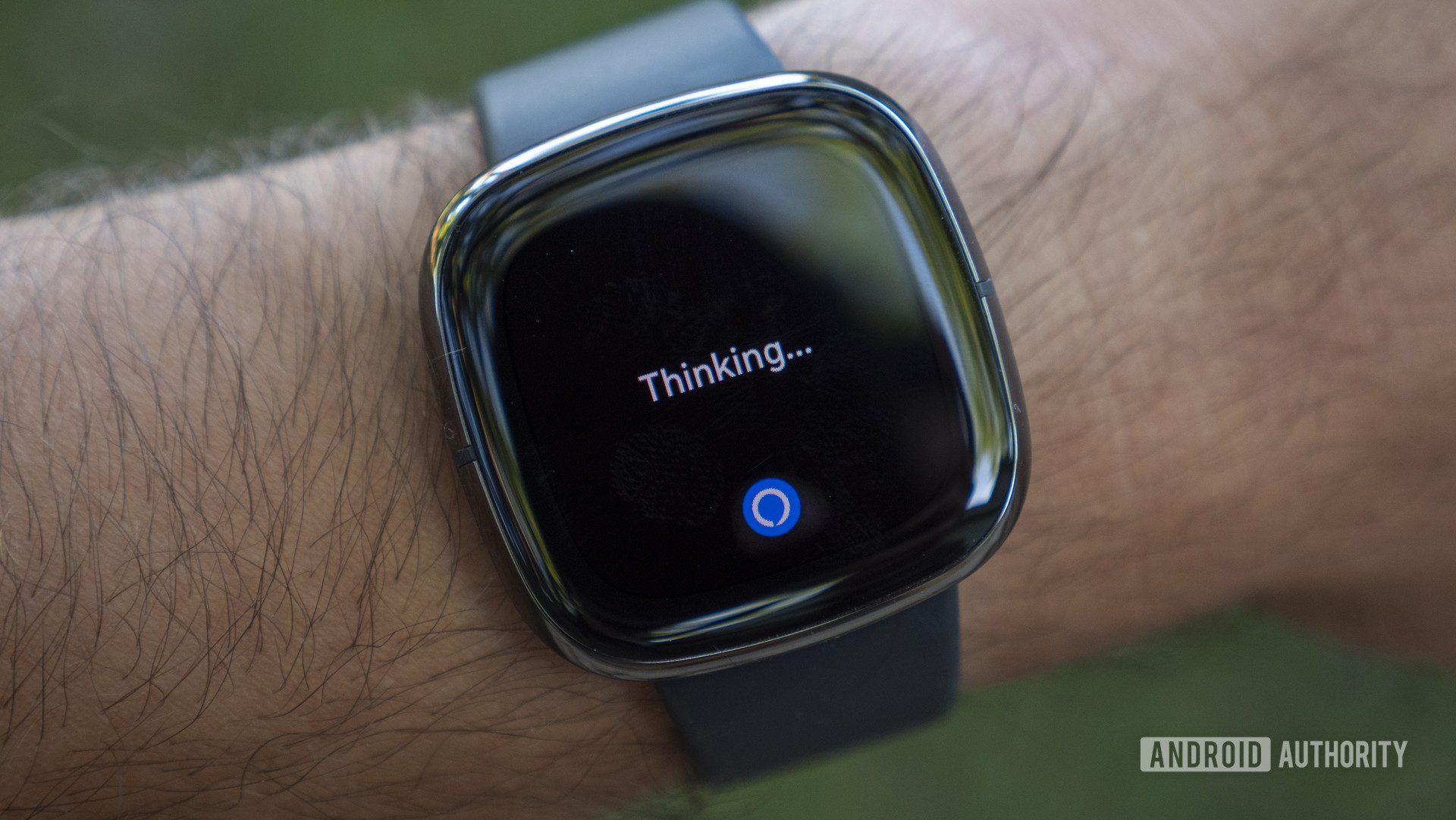
The Fitbit Sense comes with Amazon Alexa and Google Assistant support, just like the Versa 3. This is significant because the newer model, the Fitbit Sense 2, only offers Alexa. You can summon voice assistants by long-pressing the side button. Notably, there’s no hot word support here. Alexa can handle simple requests like “What’s the weather?” and “Turn on my bedroom lights,” but more advanced commands aren’t supported. This isn’t the same Alexa you get on your smart speaker. For Assistant, you’ll need to have the Google app installed on your phone.
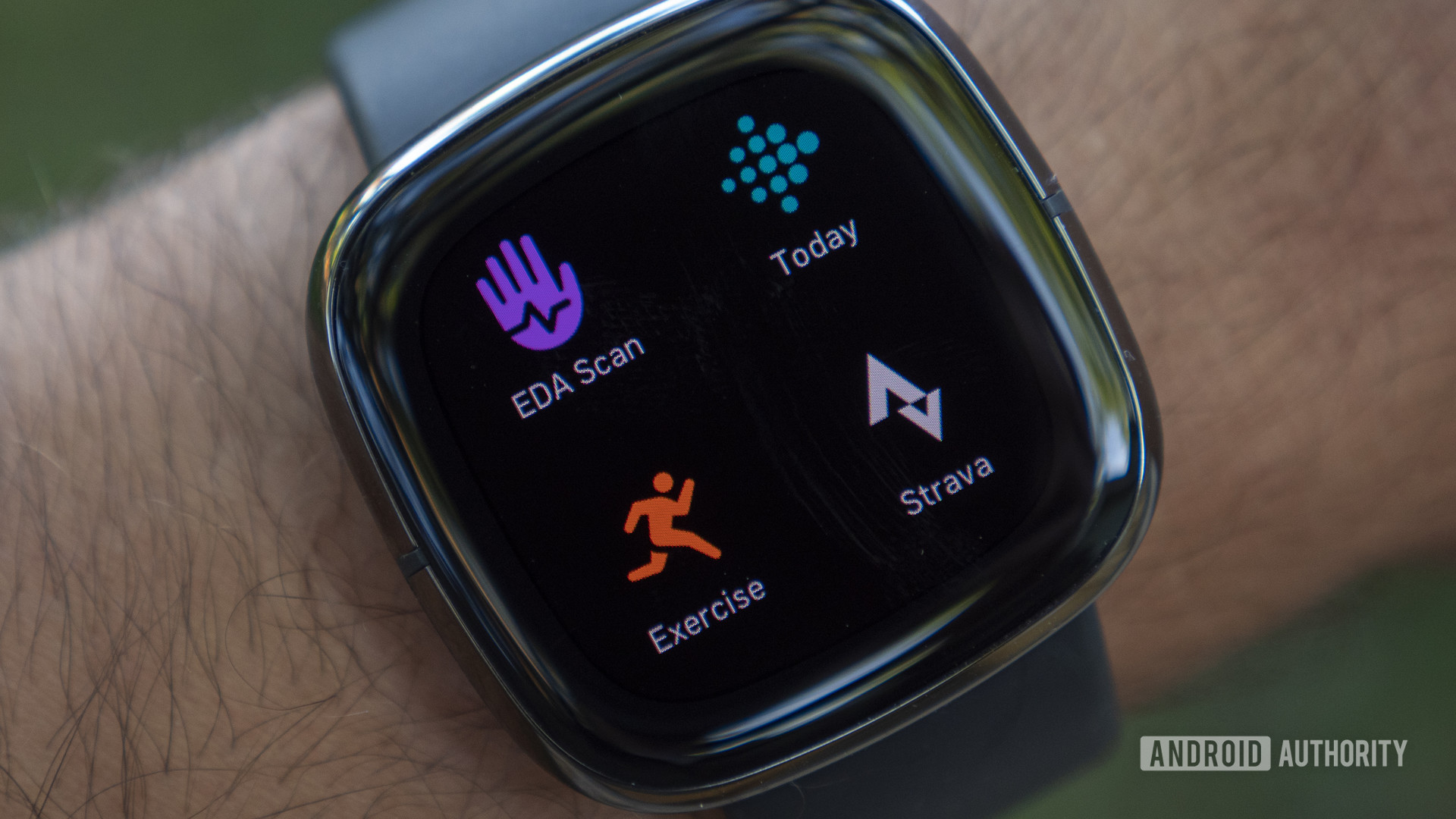
Music support was standard on the Fitbit Sense. However, Fitbit is shuttering the support at the end of March 2023. This is a major blow to an already fledging smartwatch. Likewise, Fitbit app development has all but fizzled out and doesn’t have a promising future. The latest Fitbit smartwatches don’t offer any third-party app support, indicating that the company is unlike to develop the Fitbit App Gallery going forward.
Overall, it feels like Fitbit is treading water with Fitbit OS. Recent updates have been relatively devastating to the smartwatch line. Since the Sense originally launched, the smartwatch market has only heated up. In light of the Google Pixel Watch, it’s clear that Fitbit is kneecapping its smartwatches to incentivize shoppers toward Google’s flagship device — check out our detailed comparison between the Sense 2 and Pixel Watch for all the details. The newest devices skimp on key features and recently announced platform changes set this older device further behind.
If apps and music aren’t a priority, the Fitbit Sense gets most of the basic smartwatch stuff right. It gives you smartphone notifications you can respond to via quick replies or voice dictation (Android only). Also, all Fitbit Sense models also come with Fitbit Pay support for contactless payments. I used it at a coffee shop and ran into zero issues.
Fitbit Sense specs
| Fitbit Sense and Fitbit Versa 3 | |
|---|---|
Display | 1.58-inch touchscreen AMOLED 336 x 336 resolution 1,000 nits Corning Gorilla Glass 3 |
Battery | Smartwatch mode: 6+ days Lithium-polymer battery Charge time: (10-80%): ~40 minutes |
Memory | 4GB (2.5GB available for music storage) 7 days of motion data, daily totals for past 30 days HR data at 1-second intervals during exercise, 5-second intervals all other times |
Materials | Sense: aluminum case, stainless steel ring for ECG Versa 3: aluminum case Classic strap: flexible material similar to that used in many sports watches |
Sensors and components | Sense: Electrical sensors compatible with ECG & EDA app Sense: Skin temperature sensor Versa 3: Device temperature sensor Optical heart rate sensor Built-in GPS + GLONASS Gyroscope Altimeter 3-axis accelerometer Ambient light sensor Wi-Fi (802.11b/g/n 2.4GHz) NFC Vibration motor Speaker Microphone |
Water resistance | 5ATM |
Notifications | Call, text, calendar, email, music control, and much more |
Compatibility | Android, iOS |
Dimensions | Sense: 40.48 x 40.48 x 12.35mm 45.9-48.2g Versa 3: 40.48 x 40.48 x 12.35mm 41-43g Small strap: 140-180mm Large strap: 180-221mm |
Colors | Sense: Carbon/Graphite stainless steel, Lunar White/Soft Gold stainless steel Versa 3: Black/Black aluminum, Pink Clay/Soft Gold aluminum, Midnight/Soft Gold aluminum |
Fitbit Sense review: Price and competition
The Fitbit Sense is available from Fitbit.com, Amazon, Best Buy, and other retailers. Its list price is $299.95 (down from $329 at launch) in Carbon/Graphite and Lunar White/Soft Gold colorways. However, since the device is a few years old at this point and has a successor now available, it is easy to find it for much lower prices.
Speaking of, the Fitbit Sense 2 ($299.95 at Amazon) isn’t much of an upgrade over the Sense. The returning physical button is a welcome fix for those who hate inductive buttons, while the continuous EDA monitoring makes keeping track of body responses a little easier. But it’s devoid of smart features you’d expect to be carried over from the Sense. We simply can’t recommend it over the original.
Then, there’s the Fitbit Versa 3 ($158 at Amazon). It’s now much cheaper than the Sense, doesn’t have any of the more expensive sensors, and is pretty much the same watch from hardware to software. I see no reason to buy the Fitbit Sense over the Versa 3 if you don’t need the extra sensors, and the Versa 4 suffers from the same lacking smarts as the Sense 2
The Google Pixel Watch ($329 at Amazon) is also worth a shout. It’s not a Fitbit, but it includes the company’s fitness tracking suite with additional smart features. Namely, the Google Play Store offers extensive third-party app support. It does suffer from first-generation problems, but it’s the best smartwatch for true Fitbit enthusiasts.

The Sense’s main competition is the Apple Watch lineup. The Apple Watch Series 8 ($329 at Amazon) is more expensive and has an SpO2 monitor, a skin temperature sensor, and a medically certified ECG sensor, while the Apple Watch SE 2 ($269.99 at Amazon) undercuts the Sense and offers many more smart features. Of course, this has no bearing on Android users as Apple requires an iPhone for Apple Watch use. Fortunately, there are plenty of Fitbit alternatives.
Looking for more smartwatch features? The pricier Garmin Venu 2 Plus ($449 at Amazon) is worth a shout if you can stomach the asking price. Samsung’s Galaxy Watch 5 ($162.57 at Amazon) series is also a better buy for those looking for a better smartwatch option. It keeps tabs on some metrics that the Sense doesn’t, including body composition, but it does lack the accuracy of the Sense. The base model is also cheaper than the flagship Fitbit. However, you won’t even get close to the ~6-day battery life of the Sense with this or any Wear OS watch.
Finally, if you’re looking into buying the Fitbit Sense mainly for its health-focused nature, you should also consider checking out the Withings ScanWatch ($299 at Amazon). The ScanWatch is medically certified for ECG. It can also detect signs of sleep apnea.
Fitbit Sense review: The verdict
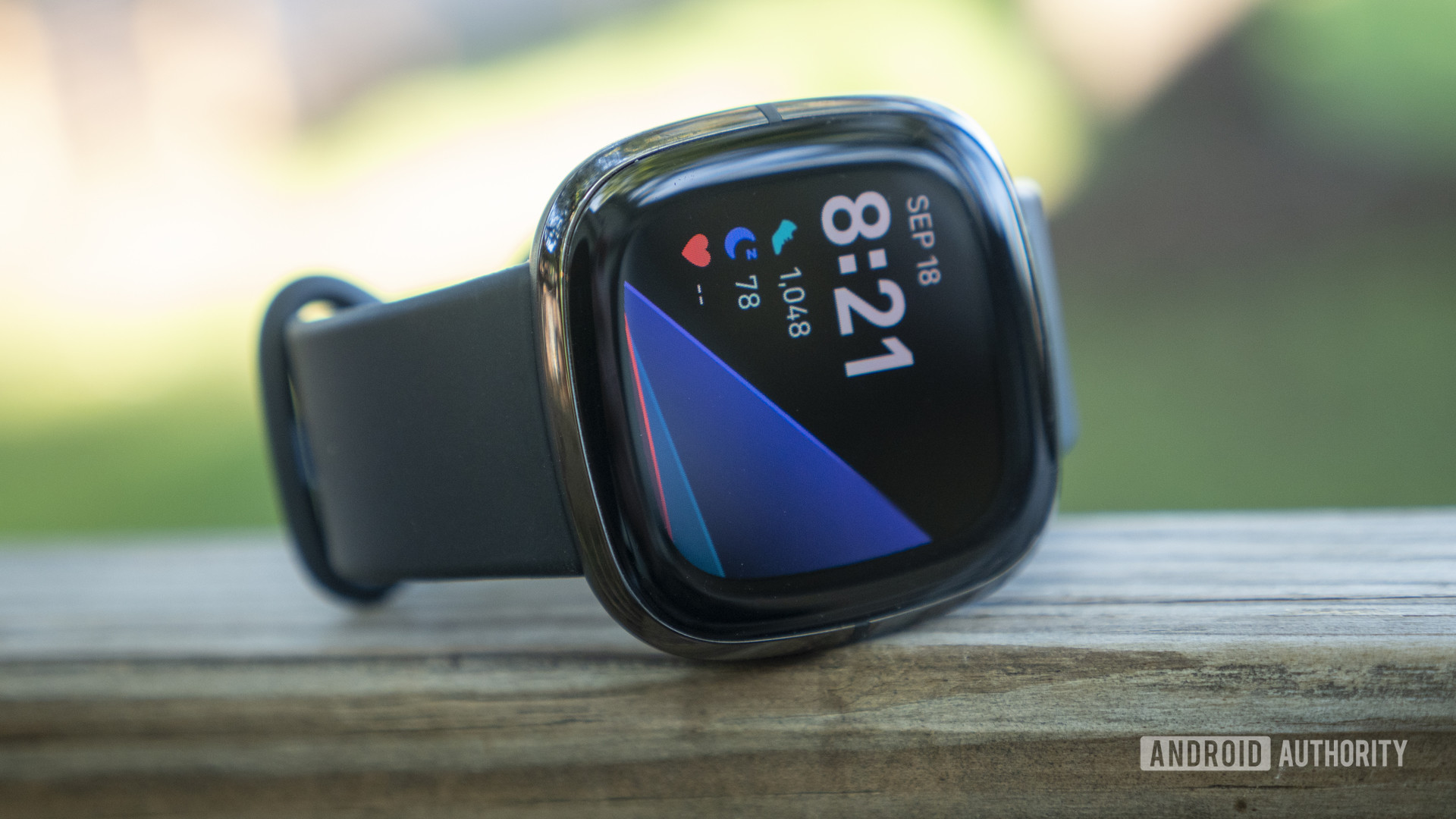
Fitbit needed to prove that its EDA, ECG, and skin temperature sensors were worth the extra cash over the Versa 3. The EDA sensor has the potential to provide useful insights into your stress levels, but Fitbit hasn’t really nailed it. The skin temperature sensor could be useful if you’re a little paranoid about contracting an illness or need some peace of mind. The ECG sensor in the Sense is also legitimately useful, but likely not for a wide user base.
On its own, the Fitbit Sense is an impressive fitness tracker that nails the basics. With built-in GPS, a good heart rate sensor, detailed sleep tracking, and a fantastic companion app, it’s a wonderful health companion. However, the Sense doesn’t exist in a vacuum. For Fitbit to keep up with the competition, it needs to deliver on all fronts: basic fitness and health tracking, hardware, and software. Sure, Fitbit’s hardware and fitness tracking efforts should not go unnoticed. But some of the other annoyances aren’t things we should be seeing on a $299 MSRP smartwatch, even if it somehow offers more value and features than its successor, the Sense 2.
More importantly, Fitbit’s future feels shaky. The removal of key features years after launch is disappointing and honestly, a bit sketchy. Nowadays, it’s hard to consider this device in the same league as an Apple or Galaxy wearable when some smartwatch features are disappearing and app support might not develop much in the future. For now, the original Sense straddles a fine line between tracker and smartwatch, and its fantastic battery life is what keeps it attractive. If Fitbit wants to keep competing in today’s market, it needs to be on its A-game.
Top Fitbit Sense questions and answers
The Fitbit Sense is a solid health watch thanks to its ECG, EDA, and skin temperature sensors, plus its reliable fitness features. We also rate it above the Sense 2 thanks to its smart features, third-party apps, and Google Assistant support. However, we recommend considering the Versa 3 or Charge 5 if you can skip extra health sensors.
The Fitbit Sense is by far a better smartwatch than the Versa 4, but the Versa 3 offers better value if you don’t need the Sense’s EDA, ECG, or skin temperature sensors.
Yes, the Fitbit Sense is a better smartwatch than the Sense 2 thanks to Google Assistant support, third-party app support, and music controls.
The Fitbit Sense can take calls thanks to its microphone and speaker, but you can’t place a call without your phone. There’s no LTE version of the device.
The Fitbit Sense is water resistant up to 50 meters.
Yes. The Fitbit Sense has NFC for contactless payments through Fitbit Pay.